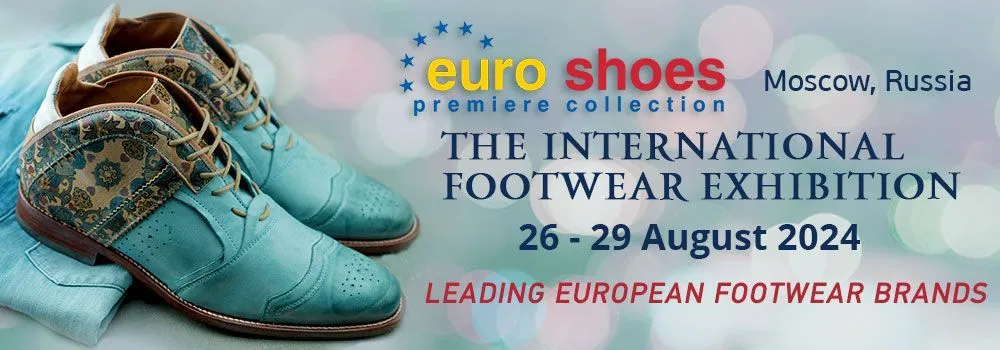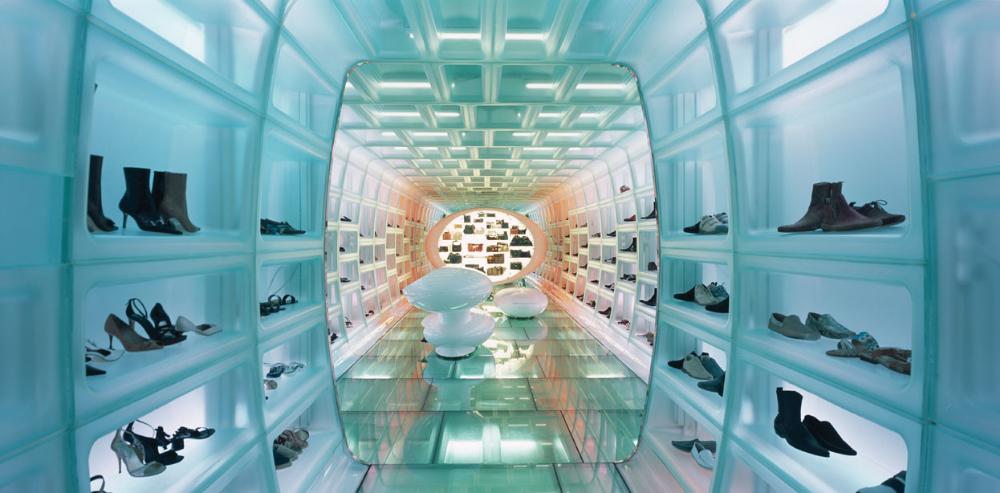
How to go from beautiful words about new technologies to the difficult task of mastering them? Life hacks for the introduction of new services for customers of a shoe store

How have digital technologies and innovations already influenced and continue to influence the development of retail in Russia? What new changes can we expect in the next 2-3 years? What innovations are being actively implemented in Russian retail today, and how should an ordinary retail store approach this difficult issue? Which retail model holds promise? In this article you will find answers to these and other questions, as well as life hacks on the implementation of new services for clients from an independent expert on the introduction of innovations in retail, the author of the "Store 4.0" concept, Boris Agatov.
 Boris Agatov - an independent expert on the introduction of innovations in retail, the author of the concept "Store 4.0"
Boris Agatov - an independent expert on the introduction of innovations in retail, the author of the concept "Store 4.0"New technologies (NT) are being actively introduced today in absolutely all spheres of the economy, including in retail.
They can be roughly divided into two categories:
the first is new technologies that improve the customer experience (user-, consumer-, customer-experience);
the second is new technologies that improve the efficiency of the company's business processes.
In both categories, there have been dramatic changes over the past few years, affecting retail in Russia.
The development of NT, which improves the shopping experience, has led to the fact that the buyer has a choice between a variety of online shopping channels, very effective, ranging from marketplaces, mobile applications, joint shopping sites and ending with private message boards such as Avito. These channels are now used by millions of buyers in our country.
New technologies, new channels have made it possible for a person to choose between traditional forms of offline consumption and those offered by modern technologies in retail. And the new channels turned out to be much more convenient for the overwhelming majority who use them than the traditional ones. Due to the fact that the market capacity does not increase either in the number of people or in purchasing power, there is a flow of buyers from old sales channels to new ones. Through new channels, it is now possible to get everything that we so mercilessly lacked when shopping in the traditional way.
Here are just a few examples of NT that allows you to make purchases online at a completely different quality level:
- personalization of the offer - relatively easy to implement online and extremely difficult offline;
- product comparison according to their various characteristics, properties, price, etc .;
- getting feedback - Feedback is extremely important for both the seller and the buyer. Most of the buyers are guided by the reviews left in the retail.
That is why new technologies have become so attractive for buyers in general, because they help them make the simplest and fastest choice in a huge sea of many offers.
Technologies that increase the efficiency of business processes and which are not visible to the buyer have also made a huge contribution to changing all processes in retail.
These include:
optimization of logistics,
category management,
reduction of personnel costs,
a high degree of automation of business processes.
The unification of many processes that are easily scalable allowed the business to allocate new competencies to replace the old ones, and such competencies include a strong IT structure, which makes it possible to significantly change approaches in business to many things, including interaction with the buyer, and bring them to a completely different level.
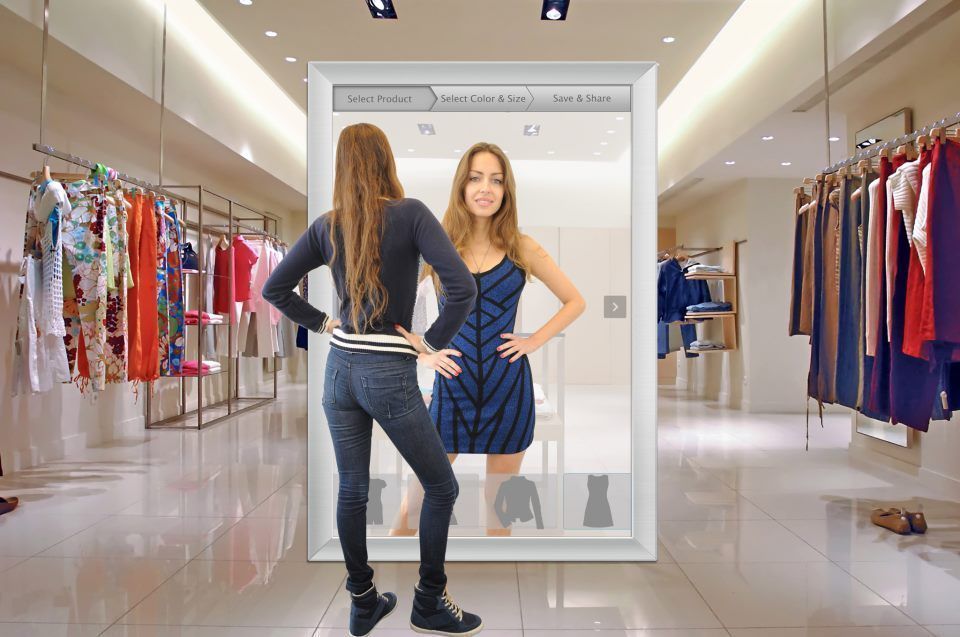
Personalization and analytics are the two main trends of the era of change
What changes will there be? We entered a zone of very rapid changes, and many things that we are talking about now may become outdated within 2-3 years, nevertheless, we can note the following important trends in the development of retail:
1. Personalization issueswhich are now at the forefront of most companies will undergo some changes. For example, a retailer does not need to know what your name is, whether you are a man or a woman, when your birthday, because your online behavior, which is traceable, will say more about you than formal personal information. If we see that on the eve of a certain day a person begins to buy food intensively, then this must be connected with something. And we can make him a product offer based on his behavior. This requires the collection of data in many channels and further analytical work with them, but the data can be impersonal, personal information is not so important in this case;
2. More thorough analytics human behavior in the trading floor. We already know a lot about how he behaves online, but most retailers are not yet able to collect analytics on an offline store, analyze it and draw conclusions on this basis about how customers behave on the trading floor - where they stayed , about what product, where did they go, etc. Hot-cold zones, how the client behaves before and after the purchase, lighting of trade equipment and the sales area - all these issues are very important for the further development of offline. Despite the fact that online is growing very quickly, it still accounts for no more than 10-15%, and for some categories of goods only 3-4% of the total volume of purchases, so it is so important for retailers to pay even more attention to analytics and technologies. than online technology;
3. Sharing models behaviors will increasingly enter the life of the buyer and retailers, replacing the consumption of product groups, since sharing (from the English word share - to share, the idea of sharing goods and services, one of the most popular today is car sharing - Ed.) is not consumption, but a service, and there will be a substitution of material sales for the sharing service.
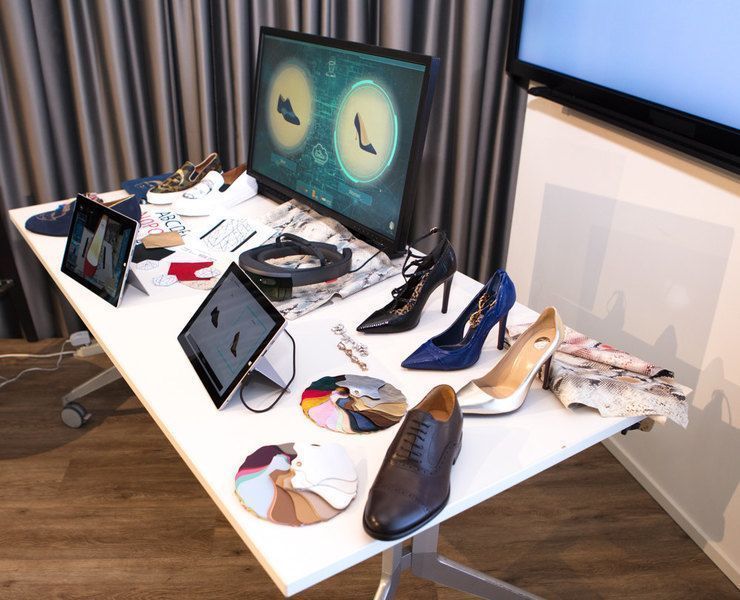
Russia is ahead of the rest of the world in the development of electronic payments
Technology grows quickly and well where there is a sufficient flow of investment and broad markets for new technologies. Russia as a whole cannot boast of either one or the other, but, nevertheless, in many segments, including in retail, there are rapid processes for the development of new interesting technologies.
An example of a technology that is qualitatively very different from what is on the market today is video on demand. It has gained incredible popularity in the Asian markets, and now it is actively developing here. It works like this: you have a button on your website or in an online store that the user can click on (the button under the product) if he wants to examine the thing or shoes he likes more carefully and photos alone are not enough for him, and then online you can contact a seller in a real store who can show the soles, laces, seams, other details, put on shoes, or even this video can be sent to customers who have agreed to participate in this communication system. This format allows you to build new relationships between the buyer and the seller, breaks down the barriers between offline and online, and thereby increases the sales area. These are relatively new technologies that are not yet widely used, for example, in Europe, but they are already being used by 3-4 Russian companies.
Or another vivid example of technologies that are more widespread in our country than in Europe - contactless payment for goods. It is quite easy to spot Russian tourists abroad in shops when they try to pay with their phone, not "stick" the card into the terminal, but attach it to the terminal, which is why the local staff do not always behave adequately.
Russia is ahead of all European markets in the development of electronic and non-cash payments, according to BCG (Boston consulting group) estimates, our country has become the largest market in Europe in terms of the volume of transactions using digital wallets and the world leader in the number of secure tokenized transactions.
During tokenization, the card number is not stored either on the mobile device, or on the servers of the smartphone manufacturer, or at the merchant; transfers from card to card are made using a token unique for each card connected to the payment service - a combination of numbers tied to a specific payment service on a specific device, which significantly increases the security of transactions. For 8 years, the number of transactions per person has grown 30 times. The researchers note that Russia has achieved incredible success in both the quantity and quality of payments, and all because we have a very high acquiring rate, which has given impetus to the development of the market and technology.
We really would have pulled ahead strongly in other directions, for this there are all the prerequisites. Talking with Western European colleagues, I found out more than once that their technologies in Russia are used more often and scale more widely than in the West. By the way, we didn’t come up with contactless payment, video on demand is also not a new invention, but there are still talks about implementation, and we are already using it with might and main, we can, successfully adapting other people's technologies, go far ahead.
Shoe retail and innovation
Fashion retail, and especially the footwear segment, stands a little apart, innovations do not take root here as quickly as in other sectors of the trade. Many associate this with some conservatism of sellers, but is this really so? In part, yes, but there are other objective factors as well.
In our country, traditionally, the leaders in introducing all innovations back in the pre-digital era have always been luxury fashion brands - mainly clothes, and shoes have always been kept separate, and there really were objective reasons for this. Luxury stores sought to impress their sophisticated customer in any way - for example, new layout and other visual merchandising tools, then these technologies became cheaper and other segments adopted them, they became massive and were used precisely in the clothing segment, because there is an extraordinary variety of displays there. positioning, which cannot be said about shoe history. Unfortunately, shoes are characterized by very modest experiments with VM, in fact, more often than not, these are only shelves on which shoes-boots or boxes with shoes are placed. A certain conservatism in the shoe segment remains, but times are changing.
In the West, shoe brands have always shown the wonders of advanced technologies, not only with IT, but also with the organization of the retail space. There is, for example, the American shoe chain DSW - this is an analogue of our "Kari". They are very open to all innovations, they offered the service of creating shoes on a 3D printer to their customers back in 2016. Now they have a very interesting vending format - when stores are huge vending machines, where a person simply presses a button and shoes come to him along the conveyor. They added nail salons to many of their stores, which increased traffic, and it is not parasitic: 20% of visitors go to the store, which allowed them to increase profits by 14% and become the leader in this segment.
As you can see, the solutions that shoe retailers are implementing can be disruptive. In our country, unfortunately, footwear is under severe pressure from counterfeit goods and discount stores, mandatory labeling may slightly change the situation, and the industry will be able to pay more attention to technology. Now, in the context of competition with counterfeit goods and discounts, margins have dropped dramatically, and companies simply do not have enough funds to develop new technologies. But efforts must be made in this direction, because other sales channels - marketplaces - are actively conquering target audience, and the new buyer needs new ideas, proposals and channels.
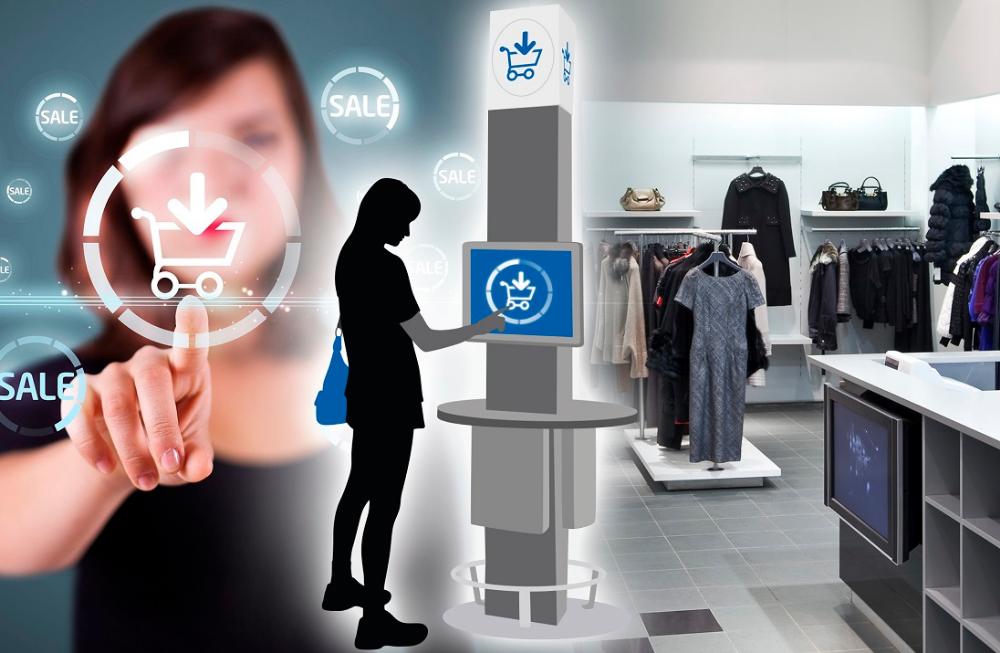
Where to start introducing technology?
I often hear questions about how to approach the difficult task of introducing new technologies for an ordinary retail store: where to start, can you cope on your own or do you need involved specialists, without which technologies there will be no further development?
Before introducing something, first you need to figure out what, in fact, is meant by new technologies, and what does a non-chain retail store need for development?
There are two directions of NT - really real innovations, innovations and basic technologies that a retailer should have for a long time. I often come across the fact that companies are trying to develop new technologies without having the basic ones. You must have and work loyalty programs, warehouse management, an automated enterprise management system - without all this, no technology will help you. Without establishing basic business processes, any technology is dead, if you have good technology, but your staff does not know what to do with it, it does not work.
Where do you start? First of all, the owner of an ordinary offline store needs to realize what the scale of your business is.
If you have a large store, then you need to pay more attention to technologies that improve the efficiency of business processes, because without this, having decided to implement some expensive IT solution and replicate it to all stores (50, 100, 200 outlets ), if the buyer ultimately does not accept the new product, you will only get losses. And if you first focus your efforts on improving the business processes of your large company, then everything will work like clockwork.
If you are a small, small store, then you should focus on improving the shopping experience that you already know well, because you are much closer to the buyer than a large chain, and you will be able to best implement the technologies that are interesting. exactly to your customer.
If you are a mid-sized company, then you should pay attention to both - and improve the efficiency of business processes and improve the shopping experience.
In numbers, all of the above can be expressed as follows:
- a large company should spend 20% of investments in new technologies on improving the shopping experience, and 80% on increasing business efficiency, this is the budget for innovation;
- a small company should spend 80% of the planned investments in new technologies on improving the shopping experience and 20% on improving and optimizing business processes.
There is a certain consensus on the market today on the costs that a company can allocate for the introduction of innovations - this is about 0,5-1,5% of turnover, but here you also need to understand: for a large company, 1,5% can be a gigantic amount, and for a small store, 1% is an insignificant amount, for which even a small innovation cannot be implemented. Therefore, everything is relative, but these figures are for information and guidance.
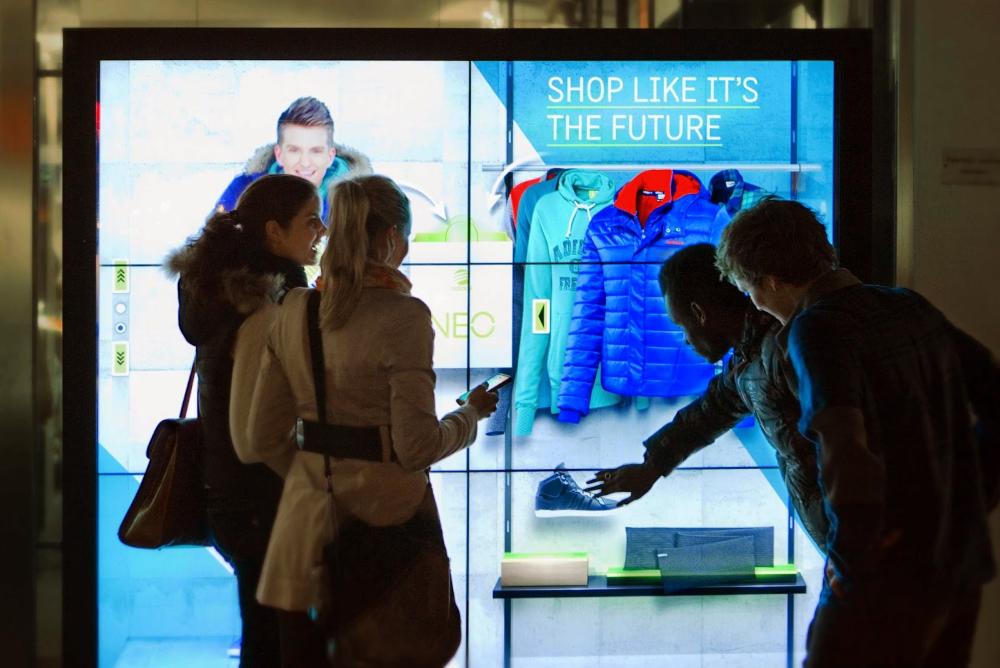
M-commerce is the most promising e-commerce segment
Mobile commerce (or m-commerce) - the sale and purchase of goods and services via mobile devices (smartphones, tablets) - one of the most dynamically developing segments of e-commerce. Therefore, a mobile application is the tool that, in terms of its importance, comes out on top among other tools of modern communication between a seller and a buyer. Firstly, the mobile application allows you to build individual communication with each customer, and secondly, it significantly reduces the cost of this communication, removing or minimizing paid channels - SMS, email, etc. Finally, it is instant, fast delivery of relevant content about promotions and other events.
Mobile apps can really help build an ecosystem for your customers. Organizing and conducting collaborations with other companies. Example: If you sell athletic shoes, you might want to partner with a sports club to provide advice on how to use your shoes. You can connect trackers to the mobile application that will count how much your customers walk (each one individually, of course) and give recommendations on the selection of shoes. That is, it is a very individual work with the buyer, and it is available through mobile applications. For example, if a person gets sick and has been in the hospital for a long time, it is not tactful to offer him to buy another pair of sneakers, but geo-targeting allows you to see: the person himself was in the hospital for six months, or went to the hospital a lot to someone.
But chat bots are replacing mobile applications, which can even replace store sites, this process is already several years old, and it will become, perhaps, very relevant within the next 3-4 years. Chatbots are already actively joining messengers.
Personnel reserve for the IT department
Of course, introducing new technologies, or rather, establishing this process, one must also think about personnel - who will do all this? In most cases it is difficult to train your own employees to work with IT, and this process is ineffective. Therefore, it is more expedient to attract new personnel to the company. What industries? Telecom, finance and everything related to computer games are the most advanced in terms of new technologies in the industry, and you need to look for personnel there, and not in retail. You need a new leap forward, which means you need specialists who have already come a long way. These three areas have advanced very far, while retail has so far gone a very short way in the implementation and development of digital innovations. Fresh talent can propel your retail business forward.
Five life hacks for the owner / manager of a shoe retail store to introduce new technologies and digital services for customers:
#lifehack1: a digital leader should appear in the company, and the owner and / or top manager should become one if he / they want to keep the business and / or stay in high positions. Unfortunately, most of the real leaders of existing networks do not have their own everyday digital experience: they themselves do not buy in online stores, they are not in social networks, they do not use gadgets, but they declare the right, relevant things, and this imbalance between the company's development strategy and real life its leader / owner is reflected in the entire business. If you want to stay at the helm of the company, you yourself need to immerse yourself in the digital sphere at the household level, start ordering clothes and shoes, other goods abroad, and not only in Russia.
#lifehack2: if you, as the owner, want to change the team, do not look for staff in retail. Look in more advanced and tech-savvy areas: esports (most advanced), fintech, and telecom.
#lifehack3: when introducing NT, you, as an owner, will face problems that cannot be solved now, at this stage, since new solutions are often nowhere and have not been tested by anyone, and you will not have good cases to choose from, they will not be available at all (no good or bad ones), or they will not be from your business - for example, food. Therefore, you need people who are versed in technology at a very high level, you need people with expertise and competencies, it is desirable to have them on the staff.
#lifehack4: The problem begins not when the owner wants to change, implement, change something, but when the middle management rejects these innovations. Therefore, changing the company's culture, training employees is perhaps the most important task now. It is further exacerbated by the fact that we have come to a demographic hole, which was the result of the failure of the birth rate in the crisis 90s of the XX century, today we have young personnel - perhaps the worst in history, because they are few of them, they have no competition , there is no rejection for quality, and this is a big problem for employers. The problem can be solved by teaching the team, capturing the older generations in the process - even those over 40-50 years old, finding in them more important qualities than in the younger ones - stress resistance, interest, responsibility and others. Personnel training has now become a strategic task, and it is not academic, but purely applied in nature, 1-2-day seminars give a greater effect than 1 month of study. A change in the culture of companies will force employees to look for such opportunities themselves, for self-development - professional and personal - there is a huge amount of resources, but the corporate culture should encourage and push to this.
#lifehack5: we are entering an era when the key competence that a company has often becomes even a certain brake on development. And this is a paradoxical situation, such a non-standard development of events, and it is now expressed in the fact that everyone is testing various hypotheses: Obuv Rossii started selling products, VkusVill - pet supplies, Rendezvous wants to become a wholesale supplier. We entered a zone of turbulence, and this is always a search for new opportunities, so there is no need to be afraid of this.
| Please rate the article |
Materials on the topic

Omnichannel on the shelves. What is it, which companies are it suitable for and should they follow this trend?

Technology Selling Issues
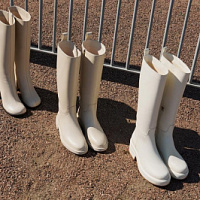
Does an online store need omnichannel?

I doubt and object: how to find an approach to difficult clients?

How to create selling visual content for online based on the identified unique selling proposition?
Popular
 Coach turned to Big Data analysis and won the interest of a young audience
American handbag brand Coach has planned the success of its Tabby model among a younger audience, Generation Z, by turning to big data analysis, abandoning traditional and analogue tools, such as human intuition or the ability of any executive to sense “which way the wind will blow,” writes B.O.F.
Coach turned to Big Data analysis and won the interest of a young audience
American handbag brand Coach has planned the success of its Tabby model among a younger audience, Generation Z, by turning to big data analysis, abandoning traditional and analogue tools, such as human intuition or the ability of any executive to sense “which way the wind will blow,” writes B.O.F.
 IDOL updates the concept
The IDOL brand, part of the Melon Fashion Group portfolio, opened the first flagship in an updated concept in the Aviapark shopping center in Moscow.
IDOL updates the concept
The IDOL brand, part of the Melon Fashion Group portfolio, opened the first flagship in an updated concept in the Aviapark shopping center in Moscow.
 Seven “sins” of the shoe business. How do owners harm the company with their own hands?
Why is Company X able to create a strong, profitable brand, but Company Y is struggling to make ends meet? Many people prefer to attribute success to luck, luck, or the support of strong patrons. And few people ask themselves the question: “What am I doing wrong?” Moreover, many entrepreneurs begin to harm their business from the first day of its opening. In this article, together with SR expert in the field of fashion business management and development, Maria Gerasimenko, we will look at the 7 main “sins” that business owners commit using specific examples.
Seven “sins” of the shoe business. How do owners harm the company with their own hands?
Why is Company X able to create a strong, profitable brand, but Company Y is struggling to make ends meet? Many people prefer to attribute success to luck, luck, or the support of strong patrons. And few people ask themselves the question: “What am I doing wrong?” Moreover, many entrepreneurs begin to harm their business from the first day of its opening. In this article, together with SR expert in the field of fashion business management and development, Maria Gerasimenko, we will look at the 7 main “sins” that business owners commit using specific examples.
 Louis Vuitton opens a new factory in Italy
Louis Vuitton has opened its second shoe factory in Italy. After opening the first one in Fiesso d'Artico in Veneto, the LVMH flagship brand has just opened a new production site dedicated to this category of footwear in the industrial zone of Civitano in the Marche region. There is also another brand production facility in Tuscany, where bags and leather accessories are produced, writes fr.fashionnetwork.com.
Louis Vuitton opens a new factory in Italy
Louis Vuitton has opened its second shoe factory in Italy. After opening the first one in Fiesso d'Artico in Veneto, the LVMH flagship brand has just opened a new production site dedicated to this category of footwear in the industrial zone of Civitano in the Marche region. There is also another brand production facility in Tuscany, where bags and leather accessories are produced, writes fr.fashionnetwork.com.
 The Euro Shoes@CAF exhibition will be held in Almaty
From March 11 to 13, the Euro Shoes@CAF (Central Asia Fashion) exhibition will be held in Almaty at the Atakent exhibition complex. The exhibition, which is the largest international event in the fashion industry in Central Asia, will present collections of clothing, shoes and accessories.
The Euro Shoes@CAF exhibition will be held in Almaty
From March 11 to 13, the Euro Shoes@CAF (Central Asia Fashion) exhibition will be held in Almaty at the Atakent exhibition complex. The exhibition, which is the largest international event in the fashion industry in Central Asia, will present collections of clothing, shoes and accessories.
 Euro Shoes will start operating on February 19 in Moscow!
The winter session of the international exhibition of footwear and accessories Euro Shoes premiere collection will be held in Moscow at the Expocenter from February 19 to 22. The organizers promise the presence of all the main participants at the exhibition, as well as new names from Europe, Asia and Russia.
Euro Shoes will start operating on February 19 in Moscow!
The winter session of the international exhibition of footwear and accessories Euro Shoes premiere collection will be held in Moscow at the Expocenter from February 19 to 22. The organizers promise the presence of all the main participants at the exhibition, as well as new names from Europe, Asia and Russia.
 American buyers couldn't buy Birkin bags and sued Hermès
French fashion house Hermès is facing a lawsuit in California from two customers who were unable to purchase exclusive Birkin bags. The fashion house is accused of unfair commercial practices.
American buyers couldn't buy Birkin bags and sued Hermès
French fashion house Hermès is facing a lawsuit in California from two customers who were unable to purchase exclusive Birkin bags. The fashion house is accused of unfair commercial practices.
 Why Rendez-Vous and Yandex Lavka released a “bread bag”
Shoe retailer Rendez-Vous announced the launch of a spring collaboration with Yandex Lavka and released a roll that resembles the shape of a woman’s handbag. This “Bread Bag” is presented in the Yandex.Lavka application at a price of 249 rubles. On the product packaging there is a promotional code for 1000 rubles, which can be spent in the Rendez-Vous network.
Why Rendez-Vous and Yandex Lavka released a “bread bag”
Shoe retailer Rendez-Vous announced the launch of a spring collaboration with Yandex Lavka and released a roll that resembles the shape of a woman’s handbag. This “Bread Bag” is presented in the Yandex.Lavka application at a price of 249 rubles. On the product packaging there is a promotional code for 1000 rubles, which can be spent in the Rendez-Vous network.
 Camper has released innovative sneakers - designers
Spanish brand Camper's new Roku sneaker features six interchangeable components to create up to 64 different looks and color combinations. Roku means "six" in Japanese.
Camper has released innovative sneakers - designers
Spanish brand Camper's new Roku sneaker features six interchangeable components to create up to 64 different looks and color combinations. Roku means "six" in Japanese.
 Christian Louboutin presented a collection in a cowboy style
At the Loubi Show in Paris, the French luxury brand Christian Louboutin presented its fall 2024 collection, following the trend - in the style of the Wild West. It included cowboy boots and rhinestone loafers.
Christian Louboutin presented a collection in a cowboy style
At the Loubi Show in Paris, the French luxury brand Christian Louboutin presented its fall 2024 collection, following the trend - in the style of the Wild West. It included cowboy boots and rhinestone loafers.
 Fashion Week takes place in Moscow
Fashion Week takes place in the Russian capital. Events include fashion shows, markets where you can purchase clothes, bags and accessories, and a B2B Showroom for fashion industry professionals.
Fashion Week takes place in Moscow
Fashion Week takes place in the Russian capital. Events include fashion shows, markets where you can purchase clothes, bags and accessories, and a B2B Showroom for fashion industry professionals.
 Turkish brand Vaneda on Euro Shoes
Street style, sport, outdoor, military – the main style directions of footwear of the company from Turkey
Turkish brand Vaneda on Euro Shoes
Street style, sport, outdoor, military – the main style directions of footwear of the company from Turkey
 Kari accuses Zenden of unfair competition and is suing the FAS
The largest Russian shoe chain, Kari, appealed to the Moscow Arbitration Court to declare the actions of the Federal Antimonopoly Service (FAS) illegal, writes RBC.
Kari accuses Zenden of unfair competition and is suing the FAS
The largest Russian shoe chain, Kari, appealed to the Moscow Arbitration Court to declare the actions of the Federal Antimonopoly Service (FAS) illegal, writes RBC.
 Fashion trends Fall-Winter 2023/24 for commercial footwear purchases
Permanent contributor to Shoes Report. Elena Vinogradova, an expert in sales and purchases in the fashion business, prepared an overview of the trends for the autumn-winter 2023/24 season especially for us.
Fashion trends Fall-Winter 2023/24 for commercial footwear purchases
Permanent contributor to Shoes Report. Elena Vinogradova, an expert in sales and purchases in the fashion business, prepared an overview of the trends for the autumn-winter 2023/24 season especially for us.
 MSCHF and Crocs launch "Big Yellow Boots"
Creator of the Big Red Boots, Brooklyn brand MSCHF has teamed up with American plastic clog and sandal brand Crocs for another oversized shoe. The new Big Yellow Boots will go on sale on August 9th.
MSCHF and Crocs launch "Big Yellow Boots"
Creator of the Big Red Boots, Brooklyn brand MSCHF has teamed up with American plastic clog and sandal brand Crocs for another oversized shoe. The new Big Yellow Boots will go on sale on August 9th.
 Five rules of professional lighting for a shoe store - something that is relevant in any season
When developing a lighting concept for shoe retailers, it is important to take into account not only the history of the brand, the architectural content of the premises, the target audience of the stores, but also the seasonality of the goods. With the onset of the cold season, client preferences change: bright weightless shoes are replaced by more massive models in discreet dark colors. Despite significant differences in summer and winter collections, the overall philosophy of the brand, its recognition should remain unchanged at any time of the year. Tatyana Ryzhova, an SR lighting expert in fashion retail, has identified five basic rules for a competent lighting concept for a shoe store for readers of the magazine, which will help to present winter assortment to customers in a winning way.
Five rules of professional lighting for a shoe store - something that is relevant in any season
When developing a lighting concept for shoe retailers, it is important to take into account not only the history of the brand, the architectural content of the premises, the target audience of the stores, but also the seasonality of the goods. With the onset of the cold season, client preferences change: bright weightless shoes are replaced by more massive models in discreet dark colors. Despite significant differences in summer and winter collections, the overall philosophy of the brand, its recognition should remain unchanged at any time of the year. Tatyana Ryzhova, an SR lighting expert in fashion retail, has identified five basic rules for a competent lighting concept for a shoe store for readers of the magazine, which will help to present winter assortment to customers in a winning way.
 Bertsy: what to look for when choosing a model
Bertsy and tactical boots are becoming more and more relevant footwear, and not only because of the start of the hunting season. In Russia, there are several dozen enterprises producing this type of footwear. Oleg Tereshin, Deputy Chief Technologist of ZENDEN, told Shoes Report about the differences and features of ankle boots and what you should pay attention to when buying them in specialized retail and online.
Bertsy: what to look for when choosing a model
Bertsy and tactical boots are becoming more and more relevant footwear, and not only because of the start of the hunting season. In Russia, there are several dozen enterprises producing this type of footwear. Oleg Tereshin, Deputy Chief Technologist of ZENDEN, told Shoes Report about the differences and features of ankle boots and what you should pay attention to when buying them in specialized retail and online.
 I doubt and object: how to find an approach to difficult clients?
How good and serene would be the work of a salesperson if the customers were calm, cheerful, always knew exactly what they wanted, and bought, bought, bought! It is a pity that this is possible only in dreams. Therefore, we will not dream, but we will act. Together with Maria Gerasimenko, a permanent author of SR, we understand the doubts and objections of buyers and build a strategy for working with them. Our expert pays special attention to the two main objections of buyers, on which 82% of sales are lost.
I doubt and object: how to find an approach to difficult clients?
How good and serene would be the work of a salesperson if the customers were calm, cheerful, always knew exactly what they wanted, and bought, bought, bought! It is a pity that this is possible only in dreams. Therefore, we will not dream, but we will act. Together with Maria Gerasimenko, a permanent author of SR, we understand the doubts and objections of buyers and build a strategy for working with them. Our expert pays special attention to the two main objections of buyers, on which 82% of sales are lost.
 EURO SHOES presents an updated section of the GLOBAL SHOES exhibition with collections of shoe and bag brands from Asian countries
EURO SHOES premiere collection is expanding. Along with the traditional pool of leading European footwear brands from Germany, Spain, Italy and Turkey, several dozen footwear and bag brands from the Middle Kingdom will be presented in the GLOBAL SHOES section at the Moscow Expocentre from August 29 to September 1.
EURO SHOES presents an updated section of the GLOBAL SHOES exhibition with collections of shoe and bag brands from Asian countries
EURO SHOES premiere collection is expanding. Along with the traditional pool of leading European footwear brands from Germany, Spain, Italy and Turkey, several dozen footwear and bag brands from the Middle Kingdom will be presented in the GLOBAL SHOES section at the Moscow Expocentre from August 29 to September 1.
 World Footwear Yearbook: Global footwear production reaches 23,9 billion pairs and is back to pre-pandemic levels
The Portuguese association of shoe manufacturers APICCAPS published the 13th edition of the international statistical bulletin World Footwear Yearbook for 2023, according to which in 2022 the production and export of shoes worldwide increased by 7,6% and 9%, respectively, and the world production of shoes reached 23,9 billion couples and returned to pre-pandemic levels.
World Footwear Yearbook: Global footwear production reaches 23,9 billion pairs and is back to pre-pandemic levels
The Portuguese association of shoe manufacturers APICCAPS published the 13th edition of the international statistical bulletin World Footwear Yearbook for 2023, according to which in 2022 the production and export of shoes worldwide increased by 7,6% and 9%, respectively, and the world production of shoes reached 23,9 billion couples and returned to pre-pandemic levels.
 Rostov footwear brand Novak presented a collection of sneakers and sneakers
In the spring-summer 2023 season, the Rostov-on-Don shoe brand Novak presented a cute collection of sneakers and sneakers for every day. The upper of the shoe is made of genuine leather, suede, nubuck, the sole is made of light EVA.
Rostov footwear brand Novak presented a collection of sneakers and sneakers
In the spring-summer 2023 season, the Rostov-on-Don shoe brand Novak presented a cute collection of sneakers and sneakers for every day. The upper of the shoe is made of genuine leather, suede, nubuck, the sole is made of light EVA.
 Jacquemus x Nike collaboration released
The second collaboration between Jacquemus and Nike, which has been talked about so much, is finally out. The appearance of the couple for many was a surprise. The model of Nike Air Force 1 sneakers, which was taken as the basis of the new collection, has undergone significant changes.
Jacquemus x Nike collaboration released
The second collaboration between Jacquemus and Nike, which has been talked about so much, is finally out. The appearance of the couple for many was a surprise. The model of Nike Air Force 1 sneakers, which was taken as the basis of the new collection, has undergone significant changes.
 Crocs releases a collaboration with Barbie
If Barbie ditched heels and wore crocs, they would be pink. It was this collection in pink that was released by the American brand of plastic clogs Crocs, for the release of the film "Barbie" in the United States.
Crocs releases a collaboration with Barbie
If Barbie ditched heels and wore crocs, they would be pink. It was this collection in pink that was released by the American brand of plastic clogs Crocs, for the release of the film "Barbie" in the United States.
 Shoe educational program: what shoe soles are made of
“What is the difference between TEP and EVA? What does tunit promise me? Is PVC glue? What is the sole of these shoes made of? ”- the modern buyer wants to know everything. In order not to smash his face in front of him and be able to explain whether such a sole suits him in soles, carefully read this article. In it, process engineer Igor Okorokov tells what materials the soles of shoes are made of and what makes each of them so good.
Shoe educational program: what shoe soles are made of
“What is the difference between TEP and EVA? What does tunit promise me? Is PVC glue? What is the sole of these shoes made of? ”- the modern buyer wants to know everything. In order not to smash his face in front of him and be able to explain whether such a sole suits him in soles, carefully read this article. In it, process engineer Igor Okorokov tells what materials the soles of shoes are made of and what makes each of them so good.
 How to set prices that will earn
Some businessmen still confuse the concept of margin with the concept of trade margins and set prices for their goods, guided solely by the example of competitors. No wonder they go broke! Analyst at the Academy of Retail Technologies Maxim Gorshkov gives several tips and formulas with which you can set not only ruinous, but also profitable prices.
How to set prices that will earn
Some businessmen still confuse the concept of margin with the concept of trade margins and set prices for their goods, guided solely by the example of competitors. No wonder they go broke! Analyst at the Academy of Retail Technologies Maxim Gorshkov gives several tips and formulas with which you can set not only ruinous, but also profitable prices.
 Sales of shoes and accessories: effective techniques for business rhetoric
Which speech modules are effective in communicating with potential and current customers of shoe stores, and which are not, Anna Bocharova, a business consultant, knows.
Sales of shoes and accessories: effective techniques for business rhetoric
Which speech modules are effective in communicating with potential and current customers of shoe stores, and which are not, Anna Bocharova, a business consultant, knows.
 We form the salary of sellers: expert advice
“How do you charge your consultants for personal or general sales?” Is one of the most popular questions causing a lot of controversy and gossip on the online forums of retail business owners. Indeed, how to properly form the earnings of sellers? But what about bonuses, where to get a sales plan from, do employees allow them to buy goods at discounted stores? In search of truth, the Shoes Report turned to a dozen shoe retailers, but no company wanted to disclose its motivation system - the process of its development was too complicated and individual. Then we asked four business consultants, and finally became convinced that the topic of seller motivation is very complex, because even our experts could not come to a common opinion.
We form the salary of sellers: expert advice
“How do you charge your consultants for personal or general sales?” Is one of the most popular questions causing a lot of controversy and gossip on the online forums of retail business owners. Indeed, how to properly form the earnings of sellers? But what about bonuses, where to get a sales plan from, do employees allow them to buy goods at discounted stores? In search of truth, the Shoes Report turned to a dozen shoe retailers, but no company wanted to disclose its motivation system - the process of its development was too complicated and individual. Then we asked four business consultants, and finally became convinced that the topic of seller motivation is very complex, because even our experts could not come to a common opinion.
 Technology Selling Issues
There is nothing worse than meeting the buyer with the words “Hello, can I help you with something?”, Because the seller works in the store just to help. Criticizing this well-established pattern of communication with the buyer, Andrei Chirkarev, business coach for effective sales and the founder of the New Economy project, shares the technology of truly selling issues with readers of Shoes Report.
Technology Selling Issues
There is nothing worse than meeting the buyer with the words “Hello, can I help you with something?”, Because the seller works in the store just to help. Criticizing this well-established pattern of communication with the buyer, Andrei Chirkarev, business coach for effective sales and the founder of the New Economy project, shares the technology of truly selling issues with readers of Shoes Report.
 The whole truth about Bayer. Who is he and how to become one?
Bayer is no longer a new, but still a popular and sought-after profession. It’s fashionable to be a buyer. Buyers are at the origins of the emergence and development of trends. If the designer offers his vision of fashion in the season, then the buyer selects the most interesting commercial ideas. It is on buyers that the policy of sales of stores and what, in the end, the buyer will wear depends on. This profession is surrounded by a magical fleur, often associated with a lack of understanding of what exactly is the work of a buyer.
The whole truth about Bayer. Who is he and how to become one?
Bayer is no longer a new, but still a popular and sought-after profession. It’s fashionable to be a buyer. Buyers are at the origins of the emergence and development of trends. If the designer offers his vision of fashion in the season, then the buyer selects the most interesting commercial ideas. It is on buyers that the policy of sales of stores and what, in the end, the buyer will wear depends on. This profession is surrounded by a magical fleur, often associated with a lack of understanding of what exactly is the work of a buyer.
 Fur, and not only: types of lining
In the production of winter footwear, various materials are used that are designed to retain heat and meet the requirements of consumers: natural sheepleather, artificial fur, artificial fur from natural wool and others. All types of lining fur have their own advantages and disadvantages. Let's consider the properties of each of them.
Fur, and not only: types of lining
In the production of winter footwear, various materials are used that are designed to retain heat and meet the requirements of consumers: natural sheepleather, artificial fur, artificial fur from natural wool and others. All types of lining fur have their own advantages and disadvantages. Let's consider the properties of each of them.
 Retail Arithmetic
Before you begin to solve specific problems, you need to find out how accurately all the leaders of your company understand the basic terminology of retail.
Retail Arithmetic
Before you begin to solve specific problems, you need to find out how accurately all the leaders of your company understand the basic terminology of retail.
 How to fire a worker without tears, scandal and trial
Sooner or later, any manager is faced with the need to part with an employee. Properly and on time the dismissal procedure will save the company money, and the boss himself - nerves and time. But why sometimes, knowing that a break in relations is inevitable, we put off the decision for months?
How to fire a worker without tears, scandal and trial
Sooner or later, any manager is faced with the need to part with an employee. Properly and on time the dismissal procedure will save the company money, and the boss himself - nerves and time. But why sometimes, knowing that a break in relations is inevitable, we put off the decision for months?


